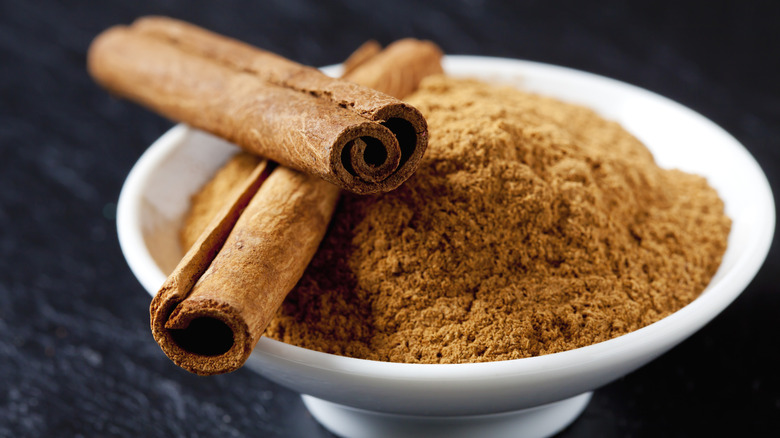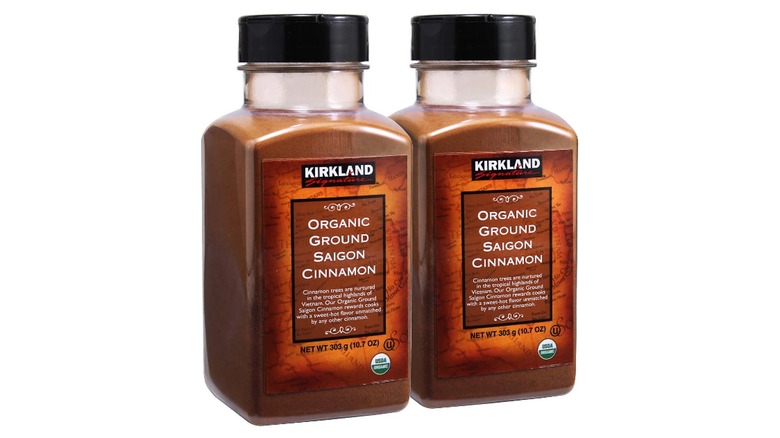Here's How Much Lead Is In Costco's Kirkland Brand Cinnamon
Lead levels in everyday foods have emerged as a serious concern for consumers, leading to several recent recalls. That includes lead-tainted cinnamon in applesauce and apple puree products popular with young children, resulting in at least 500 cases of lead poisoning. That begs the questions of how widespread the problem is and which cinnamon products to avoid. The nonprofit organization Consumer Reports provides some valuable insights after testing the lead content in major cinnamon brands, including Costco's Kirkland Signature cinnamon.
Costco sells its store-brand cinnamon in characteristically large 10.7-ounce containers, labeled as Organic Ground Saigon Cinnamon. With enticingly low prices, it's a fair guess the company moves a lot of cinnamon through 800-plus worldwide warehouse locations. Consumer Reports placed Costco's Kirkland Signature cinnamon in a middle category of "Okay to Use," due to its measured lead content on 0.80 ppm (parts per million). That's just under the criteria for placement in the "Don't Use" category, which encompasses 12 cinnamon products with lead levels above 1 ppm.
Costco cinnamon joins other well-known brands in the okay-ish category, including Trader Joe's, The Spice Lab, and the Target-owned Good & Gather. While Costco's product hovers near the highest in that category for lead content of 0.80 ppm, others are considerably lower, including McCormick and Simply Organic, at 0.23 and 0.28 ppm, respectively. Putting this in perspective requires a closer look at what levels are considered acceptable, and how lead makes its way into cinnamon and other spices.
Causes and consequences of lead in cinnamon
The FDA has no established federal limits on lead in spices, including cinnamon, though it can take actions such as issuing safety alerts. A current petition on the Consumer Reports website urges the agency to take swift action on dangerous levels of lead in cinnamon. New York, the only state to regulate lead in spices, restricts lead amounts to 1 ppm, resulting in at least 100 state-level spice recalls over the past eight years.
Lead in spices can come from the soil in which they grow, as well as through production, packaging, and storage processes. The vast majority of cinnamon comes from outside U.S. borders, with potentially low oversight and regulation enforcement. Harmful industrial elements in the soil, including lead, is particularly concerning with cinnamon because the bark can take as long as 10 years to reach maturation, potentially absorbing extensive soil and water contaminants.
Lead in foods, including cinnamon, can cause a host of adverse health outcomes, particularly during pregnancy and early childhood. Those include developmental issues with the brain and nervous system, permanent damage to intellectual and behavioral abilities, and more. Adults, too, can suffer from lead ingestion. It may cause damage to reproductive systems, kidneys, the immune system, and other issues. Prevention is key, so be aware of which cinnamon brands have the lowest lead counts, including two Whole Foods brands rated as the best cinnamon for avoiding lead.

